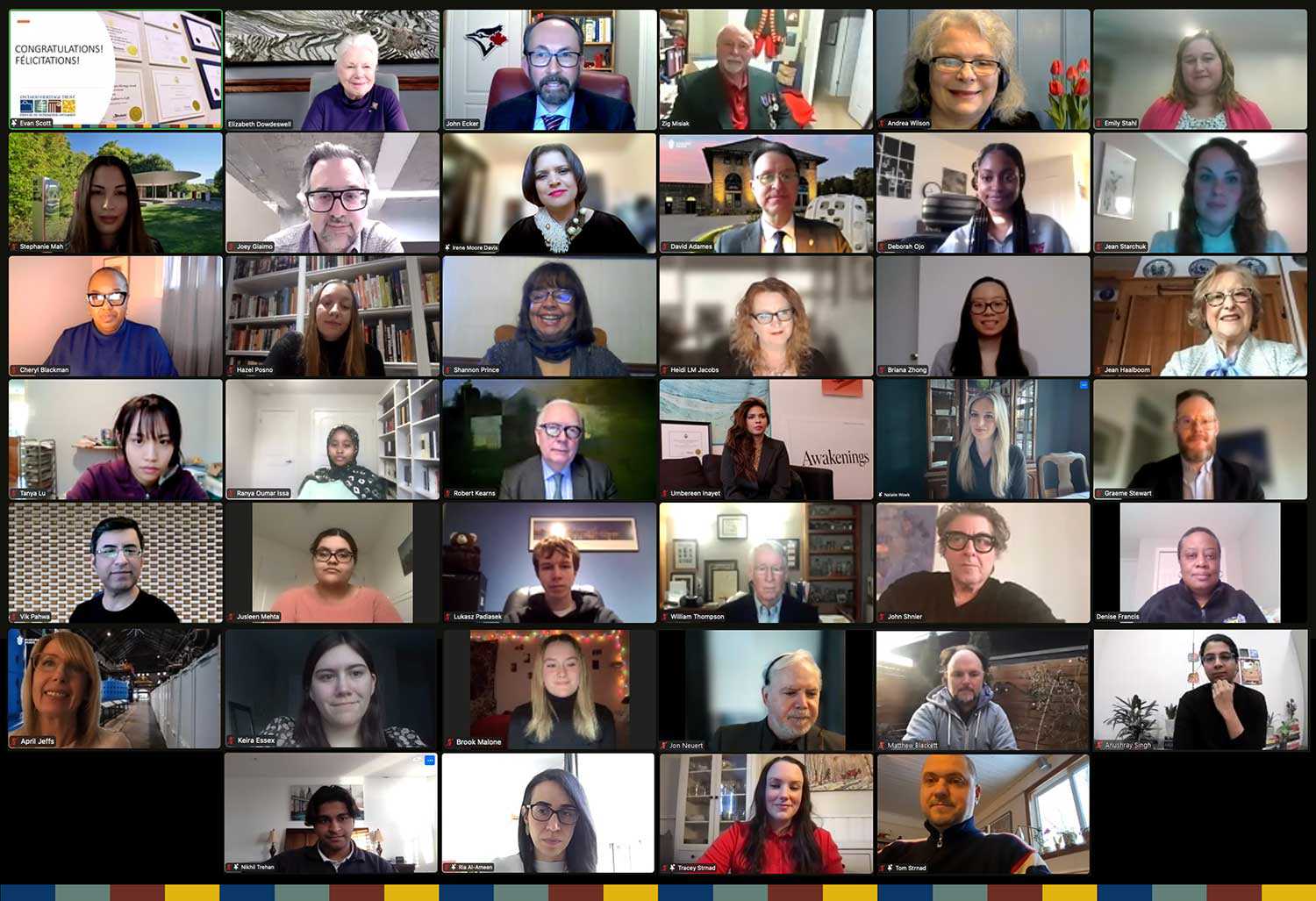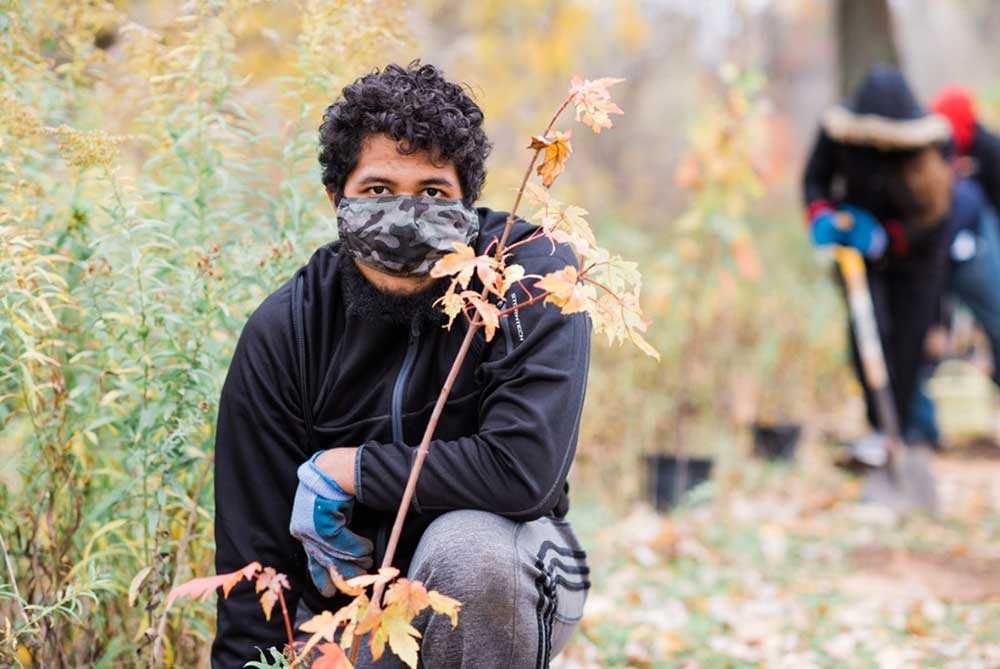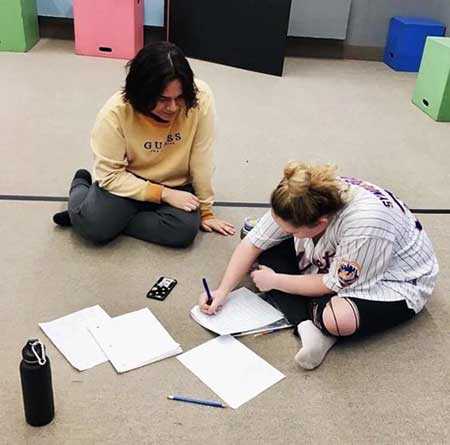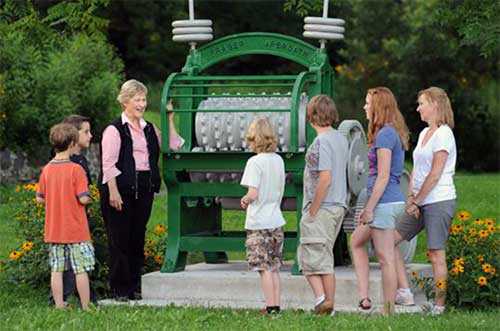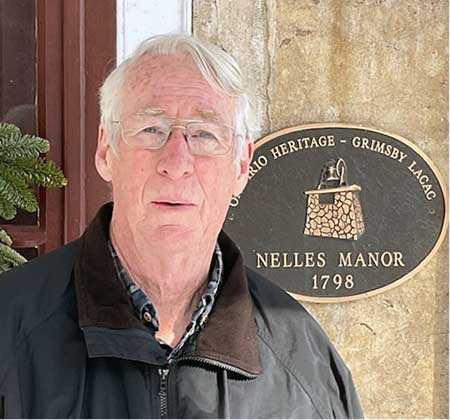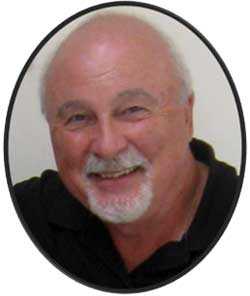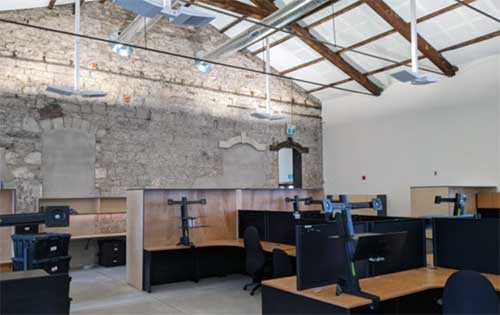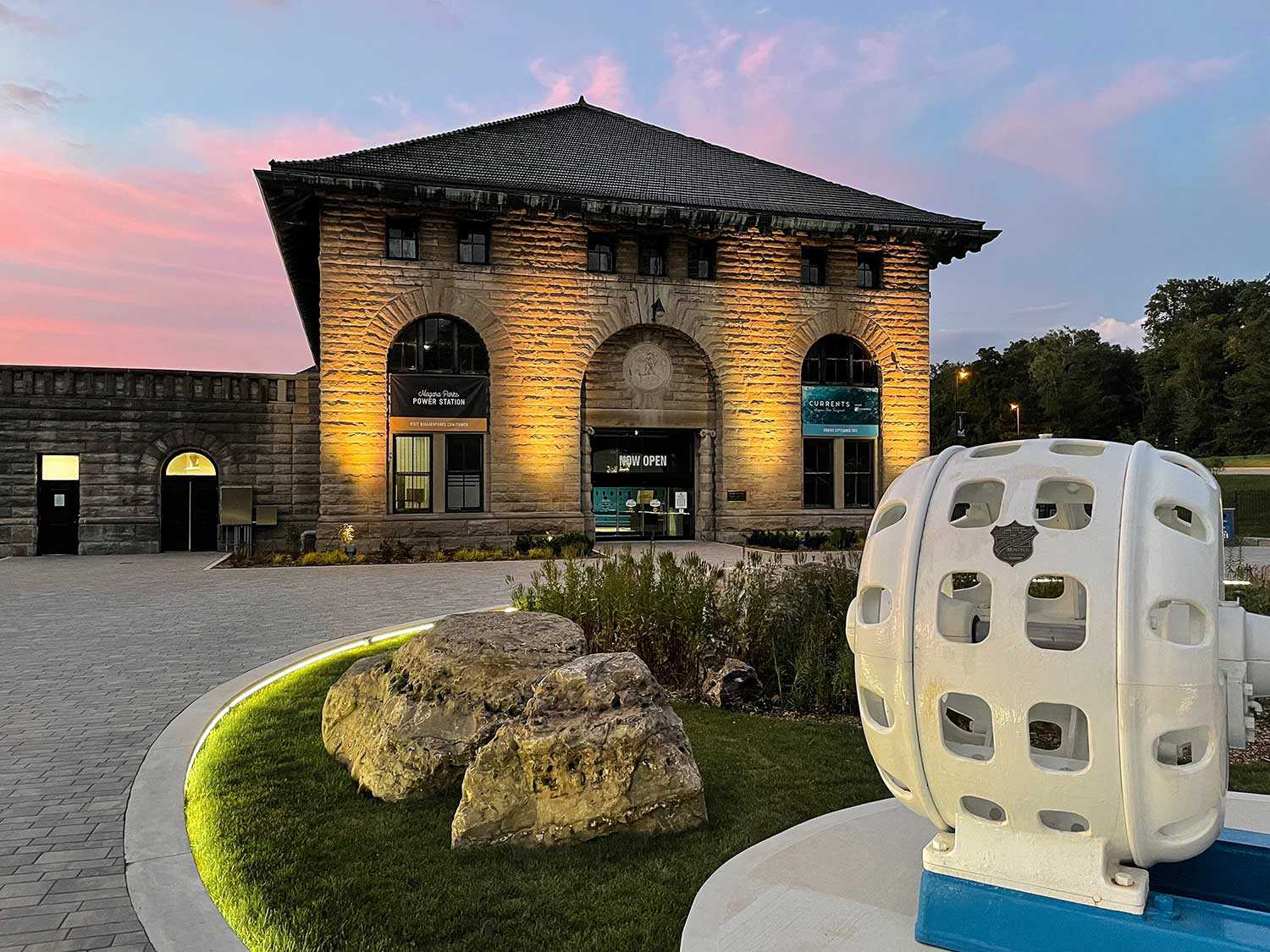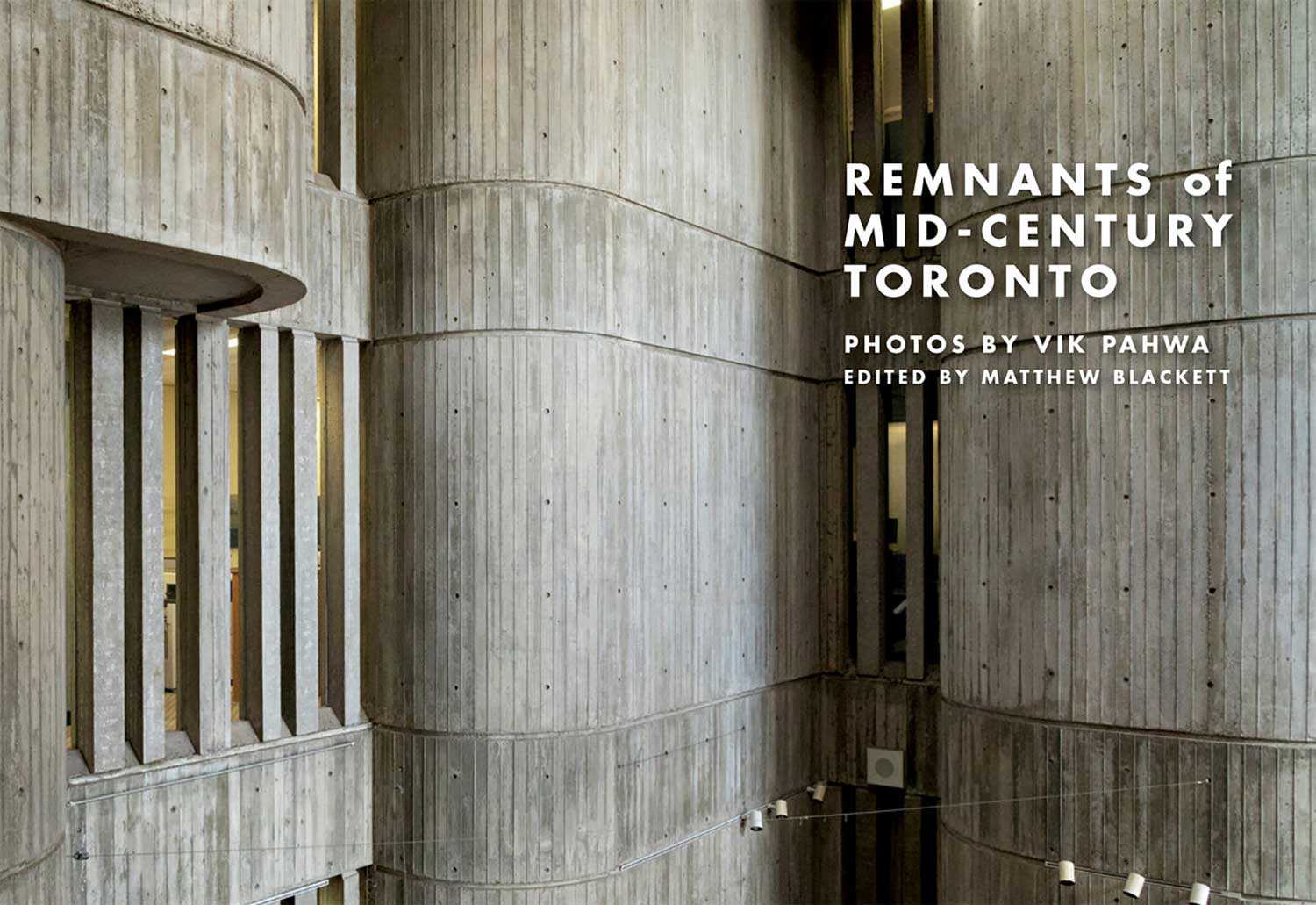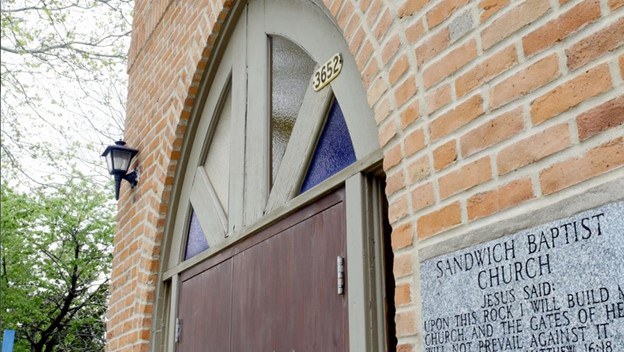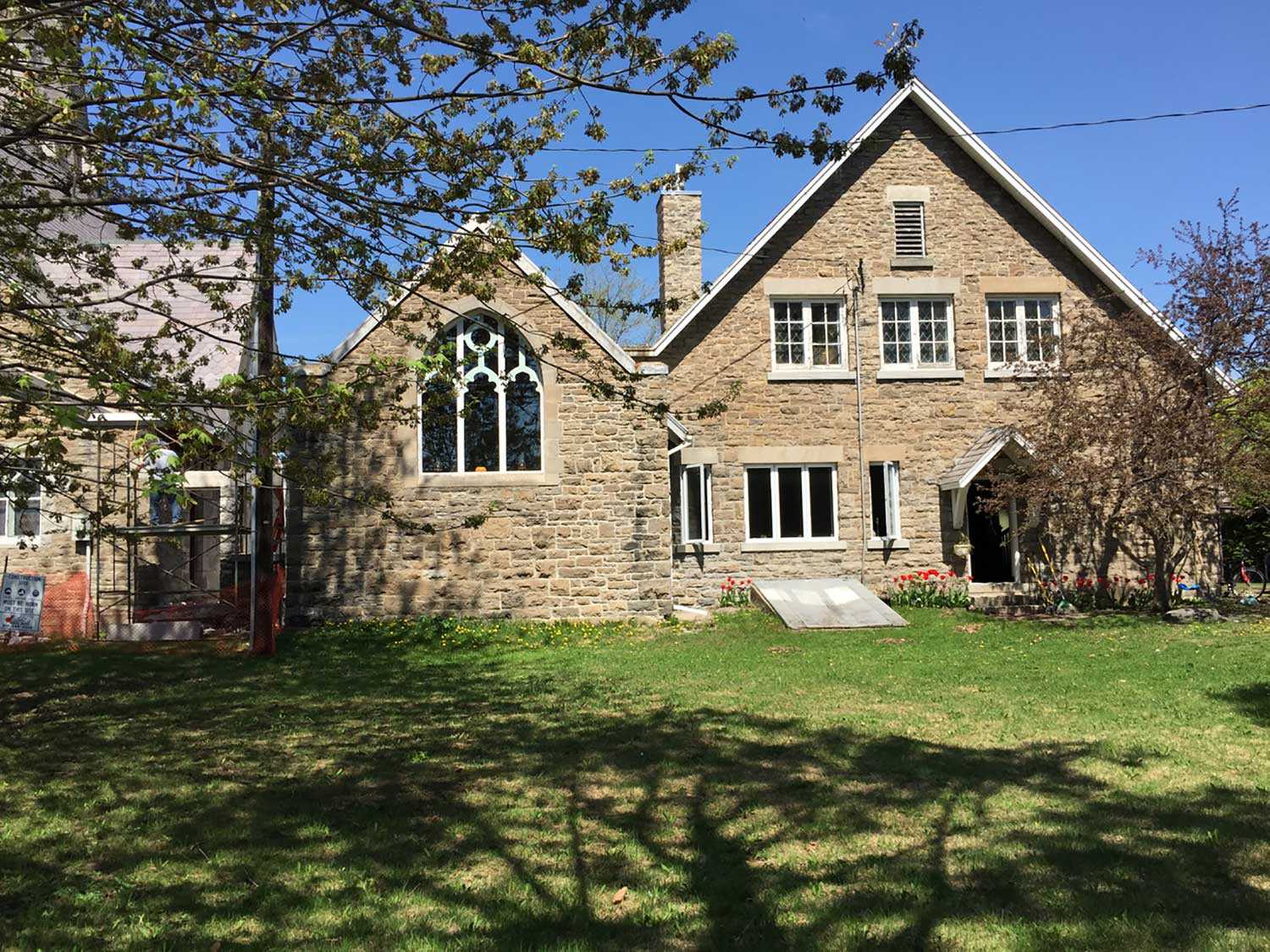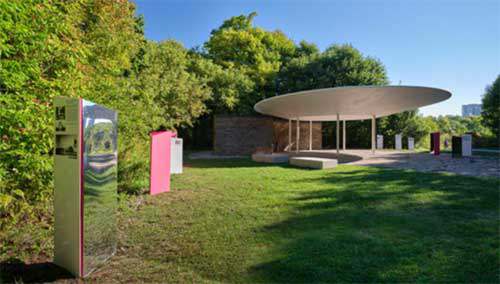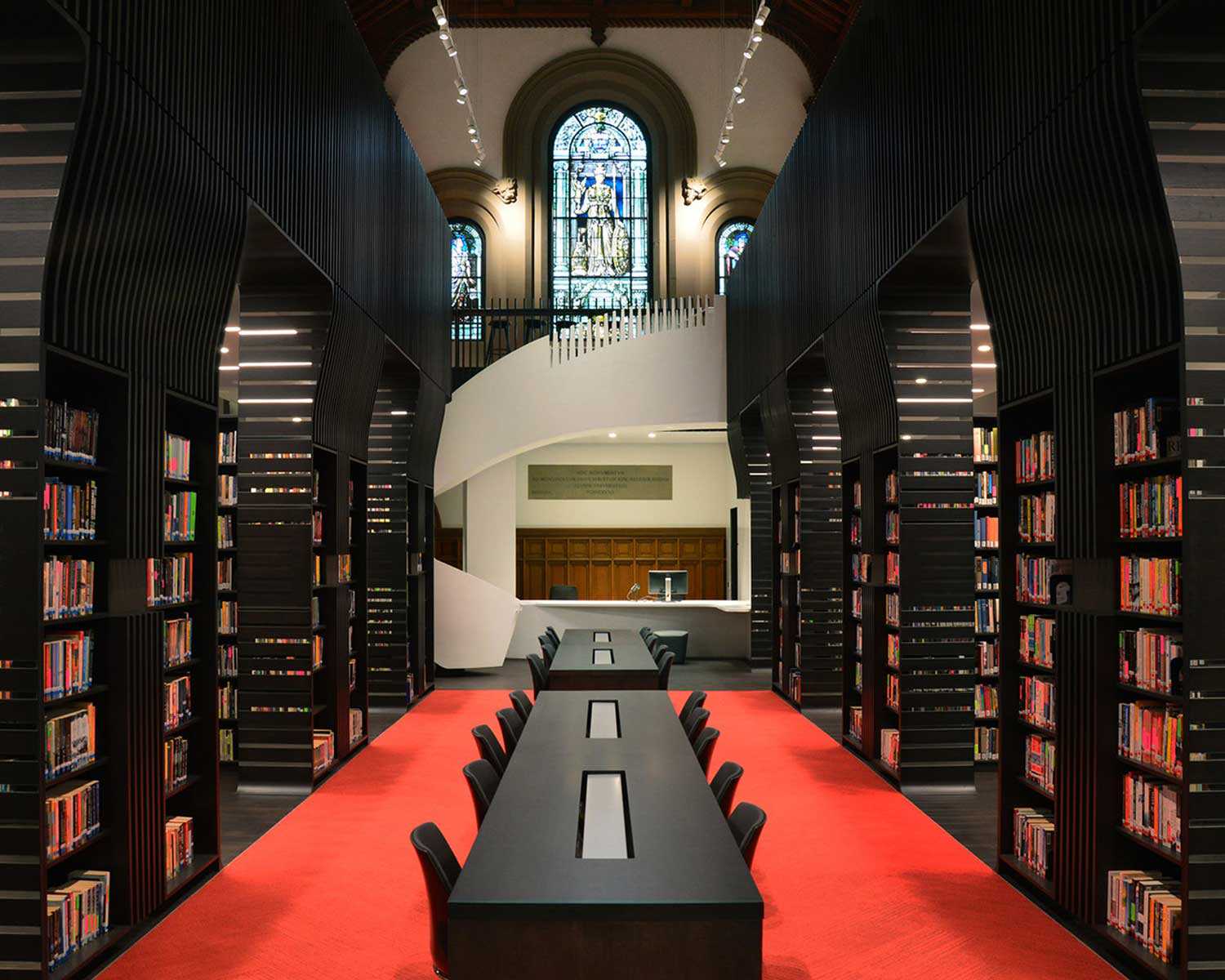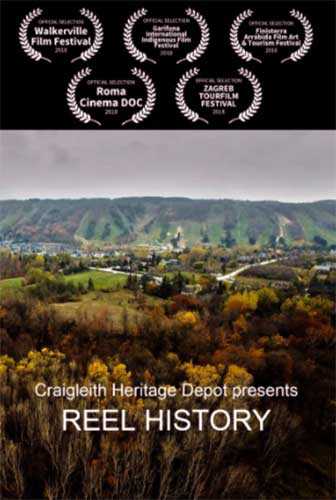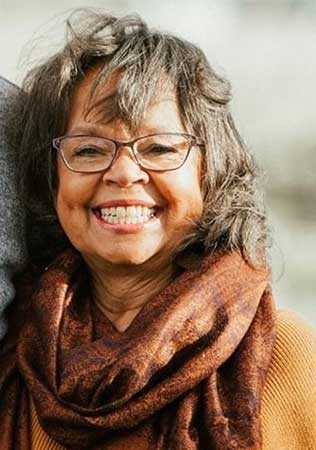Menu
2021 recipients of the Lieutenant Governor's Ontario Heritage Awards
“The Trust is pleased to join the Lieutenant Governor of Ontario in recognizing these remarkable individuals, organizations and communities for their achievements in conservation. Their contributions showcase the diversity of the province and foster a better understanding of our shared heritage. Congratulations and a heartfelt thank you to all the recipients for their dedication to preserving the irreplaceable heritage of our province.” – John Ecker, Chair of the Ontario Heritage Trust
The annual Lieutenant Governor’s Ontario Heritage Awards recognize exceptional contributions to cultural and natural heritage conservation, environmental sustainability and biodiversity. This year's achievements signal that the pursuit of heritage conservation is a transformative, forward-looking activity. It preserves our stories for future generations to enjoy and learn from, remakes our historical places into new and exciting ones while preserving their past, and transforms our understanding about Ontario’s shared histories. Congratulations to all!
We are delighted to introduce you to this year's recipients:
Youth Achievement:
Individual:
Group:
- Credit Valley Conservation’s Frontline Program 2020-21
- The Reconciliation Project (STOLEN, AZHEN)
- Social Justice Global Resources
Lifetime Achievement:
Excellence in Conservation:
- The Adaptive Reuse of the F.M. Woods Waterworks Building, Guelph
- The Adaptive Reuse of the Niagara Parks Power Station by Niagara Parks
- The Remnants of Mid-Century Toronto Photobook by Spacing and Vik Pahwa
- The Documentary North Was Our Canaan: Exploring Sandwich Town’s Underground Railroad History
- The Restoration of Parish Hall, Prescott, by Daniel and Bonita Slunder
- The Revitalization of the Oculus Pavilion, Toronto
- The Restoration and Accessibility Improvements at University College, Toronto
Community Leadership:
- The City of Toronto’s Awakenings Program
- Craigleith Heritage Depot’s REEL History Series
- The Freedom Project at Heritage Hall by the Guelph Black Heritage Society
Thomas Symons Award for Commitment to Conservation:
Youth Achievement – Individual
Briana Zhong
Briana Zhong is a 15-year-old student at St. Robert Catholic High School in Markham who has led by example to promote conservation and sustainability in our natural and built environments, and taken the initiative to launch several of her own projects. She has supported conservation activities at her school by founding its Eco-Club, and is an executive of its STEM Council, Endangered Species Club, and its Urban Design Club, where she leads discussions on how to incorporate conservation into urban and natural heritage planning. Inspired by her efforts, younger students at her school have created announcements and posters about the importance of conservation. Zhong also founded the Go Wild Nature Kits initiative, with support from the World Wildlife Fund Canada, with the vision of engaging high school students in restoring species-at-risk habitats.
Jusleen Mehta
Jusleen Mehta is a 17-year-old student at Martingrove Collegiate Institute in Toronto who has demonstrated exemplary leadership and vision by developing social media activities to engage her school and wider community about Asian cultural heritage. During her first year of high school, Mehta contributed to her school’s in-person Asian Heritage Assembly by creating posters to motivate her school community to participate and to coordinate performers backstage. When the COVID-19 pandemic necessitated the move to virtual schooling and activities, Mehta oversaw all details for Asian Heritage Month at her school, developing ways to translate her school’s in-person Asian Heritage Assembly into a variety of virtual activities that united and engaged her school community as never before. She motivated students to commit long hours toward spreading awareness of the Asian community to her school, with a focus on creating thoughtful, well researched, and effective social media experiences. These consisted of the school’s first talk show, daily infographics, weekly trivia, short films, informational videos and virtual assemblies.
Ranya Oumar Issa
Ranya Oumar Issa is a Grade-11 student at Glendale Secondary School in Hamilton who exemplifies leadership through her efforts to create lasting change in her school and wider communities, and to promote and conserve the cultural heritage of marginalized voices. She is the Chair of the school’s Community Action and Social Justice Committee, as well as the Black Cultural Awareness Committee. Her efforts to survey students on their experiences of discrimination and historical oppression, and to preserve and share these experiences, are now seen as a model for the entire Hamilton-Wentworth District School Board for student engagement and equity. As a history student, Oumar Issa created social media accounts to share historical stories of resistance, amassing thousands of followers from across Canada. She has also created education and heritage campaigns as an ally of local Haudenosaunee and Anishinaabe communities, and is currently working on a new initiative leading fundraising and design for a monument to honour the survivors of residential schools on Glendale’s campus.
Natalie Wowk
Natalie Wowk is an active volunteer in Kingston’s Ukrainian community who has distinguished herself from an early age in her dedication to the conservation of the community’s cultural heritage through active volunteerism and innovative commemorative projects. She was involved in two projects that contributed to the preservation of the historical experience of Ukrainians in the Kingston area: the Gaskin Lion and the Enduring Roots exhibit currently on display at Kingston’s City Hall. From an early age, Wowk shared her heritage with other young Canadians, representing diverse ethnocultural and faith group backgrounds as a dancer with the Maky Ukrainian Dance Ensemble in Kingston. Currently, she is documenting her family’s immigrant and working-class history, along with other community members' stories in north-end Kingston using film and oral history interviews. These efforts, unique among Kingston’s historical immigrant communities, will generate an important historical document of benefit to those who wish to learn more about this dimension of Kingston’s past.
Youth Achievement – Group
Credit Valley Conservation’s Frontline Program 2020-21
Frontline is an annual environmental youth leadership program for teens that provides youth with annual opportunities to connect with nature and environmental professionals, as well as take environmental action. Each year, Frontline focuses on a different local environmental theme/issue to build leadership skills. There are typically 60 youth in the program, but during the 2020/2021 year, 110 youth participated as Frontliners to stay engaged and active in environmental activities during the COVID-19 pandemic. The Frontline Steering Committee chose microplastics this past year as an issue that they felt was relevant to youth. With ongoing pandemic restrictions, youth were not allowed to gather and meet in-person but were committed to keeping themselves engaged and active. They planned a series of online workshops and designed at-home challenges to encourage Frontliners to act. In total, these youth have demonstrated that even through the challenges presented by the global pandemic they were not deterred from continuing to take action to improve the health of the Credit River watershed, even from home.
The Reconciliation Project (STOLEN, AZHEN)
STOLEN, AZHEN is a performance developed and led by high school students in Thunder Bay who came together to write and perform a play about reconciliation. The performance tells the story of Aurora, who leaves her First Nations community to attend high school in an urban centre. The story explores themes of racism, colonization and cultural appropriation and highlights violence against Indigenous women and girls. The topic was proposed by Cornelius Beaver, an Indigenous youth who identified a need to increase understanding among youth of reconciliation and decolonization. The project was guided by the Theatre Education Director at Magnus Theatre and engaged Elliott Cromarty, a prominent Indigenous member of the community, to act as Cultural Consultant to ensure that the subject material was being handled appropriately and sensitively. STOLEN, AZHEN was researched and written from November 2019 to March 2020, and after several attempts to stage the play were hindered by the pandemic, it was recorded on Zoom and released on YouTube. It has been viewed over 1,000 times since and has been distributed to junior high schools and high schools provincewide, with an accompanying study guide.
Social Justice Global Resources
Nikhil Trehan, Deborah Ojo and Hazel Posno, students at Holy Trinity High School in Richmond Hill, created a website for students and teachers that curated and created resources surrounding areas and voices that they felt were lacking in the curriculum, putting the focus on resources with social justice, critical theory, and equity, diversity and inclusion lenses. The focus was on providing teachers with resources from the perspective of students: enlightening teachers on Canadian heritage from the perspectives of historically marginalized groups, with a focus on decolonizing the curriculum. The students’ work inspired others in their school community, including peers and teachers, to push themselves to unlearn assumptions that may have been long standing in their curriculum or excluded from their teaching and learning. The final product provides a rich source of curated information, which educators could access, that represents a broad range of historical and current events, helping to ensure that educators understand the value of the living history of diverse Canadians.
Lifetime Achievement
Jean Haalboom
Jean Haalboom is a committed heritage advocate in Waterloo Region. For more than 40 years, she has demonstrated exemplary levels of achievement and commitment in her service to the community. Haalboom joined Kitchener's LACAC (Local Architectural Conservation Advisory Committee) in 1979, and since then heritage organizations and individuals interested in heritage in Waterloo Region owe much to her tireless efforts. Her broad understanding of what heritage conservation can do to ground and connect people and communities has allowed her to find much common ground with peers – including heritage advocates, researchers and politicians – but also with engineers, developers, the business community and newcomers to Waterloo Region. Haalboom's greatest strength is in drawing out and sharing the stories that inspire others to get involved in the field., and through her commitment to conservation, Haalboom has given a voice to the structures, landscapes and intangible heritage that make Waterloo Region’s communities unique.
Robert G. Kearns
Since he immigrated to Canada from Ireland in 1979, Robert Kearns has celebrated and commemorated the historical and cultural ties between his adopted home and his birthplace. He has most prominently served as Founder and Chair of the Canada Ireland Foundation (formerly Ireland Park Foundation), which in 2007 opened an award-winning commemoration of the arrival of Irish Famine migrants to Ontario. Kearns’s dedication to commemorating Irish-Canadian heritage has been essential to recruiting knowledgeable collaborators, as well as political and financial supporters. Kearns’s encouragement has engaged leading academics to conduct original research into early Irish migration and settlement in Ontario, and the learnings and outcomes from this research have helped inform the design and interpretations of the Foundation's commemorative efforts. These efforts have generated positive community impact, and have been shared with the public through various publications, guest lectures, interviews and multimedia presentations.
William Thompson
William Thompson is a dedicated volunteer of diverse talents, as a spokesperson, fundraiser, event organizer and leader in Grimsby’s art, culture, and heritage sectors. William has been active for over 30 years, as a member of the Halton County Radial Railway Museum, the former Director of the Grimsby Museum Board of Management, where he served for several years as Chair, and a director and current treasurer at the Nelles Manor Heritage House. At many community museums throughout Ontario, there are no paid curators or staff to carry out the core functions of conservation and public engagement. These museums are supported by the dedication of their volunteers. Residents and visitors to Grimsby, the Nelles Manor Heritage House, and the Halton County Radial Railway Museum, among others, have greatly benefitted from his commitment to conservation.
Zig Misiak
Zig Misiak is a bridge builder whose commitment to learning and understanding, particularly between Indigenous and non-Indigenous peoples, has made a significant mark on Ontario’s heritage field for over 40 years. Misiak has developed long-lasting relationships with the Haudenosaunee, Polish, Canadian and Indigenous Veterans communities, historical re-enactors, among others. He has written 16 books and produced educational materials for students and teachers, including the first Indigenous Studies Guide, co-created with Raymond Skye (Tuscarora and Seneca), that are used in over 700 schools. Misiak is also a frequent writer, speaker, media adviser and consultant. In his local community, he has been recognized for his humanitarian contributions, including generous donations, tireless efforts to educate and mentor others, and fundraising and advocacy to support the marginalized in society.
Excellence in Conservation:
The Adaptive Reuse of the F.M. Woods Waterworks Building, Guelph
This project encompasses the adaptive reuse and conservation of the 1879 Guelph Waterworks Engine House and Pumping Station, which will now serve as a vibrant and fully accessible contemporary administrative space for the City of Guelph. Originally designed as an industrial building, it was being used for storage purposes and fell into disrepair. The heritage structure required comprehensive upgrades. The adaptive reuse focused on restoring the scale and grandeur of the space through the removal of a mezzanine level that was added in the 1970s and the restoration of the cathedral ceilings to accommodate a highly flexible, studio-like workspace. This project provides an exceptional setting that celebrates the building’s history and retains significant heritage features of the interior and exterior. The project has breathed new life into the space, serves as a source of pride for staff and citizens, and symbolizes the potential of new building science practices to transform disused heritage buildings into new and inspiring places that can accommodate modern technical systems, vibrant working environments and contemporary standards of accessibility and universal design.
Project team:
- City of Guelph (client)
- Baird Sampson Neuert Architects (architects)
- Read Jones Christoffersen Engineers (structural engineers and building science and restoration consultants)
- Regal Consulting Engineers (consulting mechanical and electrical engineers)
- Development Engineering (civil engineers)
- Paulsan Construction (general contractor)
The Adaptive Reuse of the Niagara Parks Power Station by Niagara Parks
The adaptive reuse of the Niagara Parks Power Station transformed a decommissioned hydroelectric power plant into a new attraction that preserved the historical integrity of the building. Built in 1905, the former Canadian Niagara Power Generating Station is thought to be the last remaining example of a power station of its period with all its infrastructure still intact. The project was made possible through a loan of $25 million from the Ontario Financing Authority and the ongoing support of the Ontario Ministry of Heritage, Sport, Tourism and Culture Industries. The adaptive reuse has kept the generator floor with all 11 original generators completely intact, and the historical machinery and other features of the building were preserved and maintained so that they could be enjoyed by the public. In addition to offering a new guest experience for Niagara Falls that tells the fascinating history of hydroelectric power generation, the Niagara Parks Power Station will introduce a new economic driver to the region and is expected to be a catalyst for the recovery of tourism in Niagara and across the province.
Project team (in addition to Niagara Parks):
- Lord Cultural Resources
- Forrec
- Stantec
- Rankin Construction
- Ontario Ministry of Heritage, Tourism, Sport and Culture Industries
- Destination Ontario
- Ontario Heritage Trust
- Science North
- The Ventin Group
- MT Planners
- Brook Restoration
- Merit Contractors Niagara Limited
The Remnants of Mid-Century Toronto Photobook by Spacing and Vik Pahwa
In the book Remnants of Mid-Century Toronto, photographer Vik Pahwa teams up with Spacing’s Matthew Blackett and some of Toronto’s most knowledgeable architects to create connections with Toronto’s mid-century past through essays and photography. Pahwa’s photography captures both the beauty of these structures and the neglect that some currently experience. Many of these buildings are at current risk of demolition, and this collection of photos preserves their structure and memory for future generations. Short written features contextualize these photos with architectural and historical background, which reveal the intentions, ambitions and hopes of a generation of Toronto city builders. Spacing took the initiative to document the post-war era of Toronto's growth to inspire readers to understand what 21st-century Toronto has inherited from the 20th-century city, and to demonstrate that the built heritage of this period deserves greater recognition for the impact it has had on the urban landscape of Toronto, as many mid-century buildings enter their heritage status years.
The Documentary North Was Our Canaan: Exploring Sandwich Town’s Underground Railroad History
The community of Sandwich Town, established in 1797, is one of the oldest settlements in Ontario and a historically important place for the freedom seekers who used the Underground Railroad. The documentary North Was Our Canaan – produced by Irene Moore Davis and Heidi L.M. Jacobs and directed by Anushray Singh – tells a story about the community, including the lives of formerly enslaved people who built new communities in the area, and the abolitionists who worked tirelessly to help ensure the freedom of enslaved people from the United States. Though Canada’s role as a destination for American slaves seeking freedom is well documented, little has been recorded about Sandwich Town’s historical role. This documentary, through narratives shared by descendants of travelers along the Underground Railroad as well as activists and historians, provides an important insight into the significant role that Sandwich Town played for enslaved peoples seeking freedom in Canada.
The Restoration of Parish Hall, Prescott, by Daniel and Bonita Slunder
St. John's Memorial Parish Hall in Prescott, Ontario (circa 1929) was acquired by Daniel and Bonita Slunder in 2013 from the Anglican Diocese of Ontario. The building – once a bustling community hall, and a good representation of Gothic vernacular architecture in Ontario on a humble scale – had fallen into disrepair by 2013 and would require substantial remediation. The Slunders restored the structure and self-financed the project over a period of several years, transforming the former gathering space into their private home, moving in in 2016 and continuing to make improvements since then that prioritize the building’s ecological footprint, placing particular emphasis on recycling materials and fixtures where possible. Their restoration required careful and clever work, inspiring many others. They have brought the building back to life and generated substantial community pride.
The Revitalization of the Oculus Pavilion, Toronto
Built in 1959, the Oculus in South Humber Park is a fantastical space-age park pavilion. The sculptural quality and use of concrete represents a generation of ambitious and optimistic civic projects built in the late 1950s and early 1960s across Ontario. Over the last two decades, the pavilion has suffered significant neglect, though the site first attracted major interest from the Architecture Conservancy of Ontario (ACO) in 2016. In 2019, a new community-focused revitalization effort was announced, led by the Toronto branch of the ACO and the architecture firm GIAIMO, funded by Park People’s Public Space Incubator Grant. In summer 2021, the pavilion was restored and activated with new arts and cultural programming to ensure that it does not become derelict again, and to provide the community with ongoing occasions to visit and explore the space. The revitalization project transformed the Oculus into an active space for recreation, arts, and performances, and into a destination rather than a passing curiosity, which communicates the significance of modernist architecture in Ontario.
Project team:
- Architectural Conservancy Ontario (ACO)
- Giaimo
- ACO Toronto
- ACO NextGen
- Walton GC
- Colonial Restoration
- City of Toronto
The Restoration and Accessibility Improvements at University College, Toronto
The University College Revitalization project renews its facilities to create a more inclusive space for students, focusing on improving the accessibility of this National Historic Site. Accessible features were integrated sensitively into the heritage fabric, including new ramps between existing floor levels and stone walkways, constructing a new elevator tower, and the provision of concealed accessible hardware into historical door assemblies. Historical elements are referenced throughout the new spaces, additions, and restored areas. New wood and stone materials were selected to complement the original material palette, and motifs drawn from the existing carvings informed crucial parts of the design vocabulary. Extensive research into the historical layout of the institutional spaces led to contemporary interventions that brought back some of the original flow lost through decades of renovations and alterations. University College has a long history of innovation. This is now also reflected in this revitalization, which has created new and accessible spaces for students and staff alike.
Project team:
- ERA Architects
- Kohn Shnier Architects
- University of Toronto
- MJ Dixon Construction
- Clifford Restoration
Community Leadership
The City of Toronto’s Awakenings Program
Awakenings is a series of art projects by Black, Indigenous and artists of colour (BIPOC), centred at City of Toronto museum sites. The series is part of the City of Toronto’s efforts to address anti-Black racism, developed when Toronto history museums recognized the need to reassess the way in which it develops, delivers and evaluates its programming. The series will be released over the next couple of years. Toronto history museums are embracing partnerships that embody BIPOC voices, stories and knowledge into programs, collections management and sites, representing more than 80 per cent of creative people involved in Awakenings art projects. Awakenings projects employ the historical buildings of the City of Toronto museums as settings, with the bold aim of disrupting, discovering and displaying colonial narratives. Conservation is a high priority in the use of the buildings as settings and screens for artwork, films and projections, and the museums have worked with the City of Toronto conservators to ensure a high standard of conservation. The output of these projects aims to document perspectives from many cultures as a form of conservation, to preserve diverse stories for future generations.
Craigleith Heritage Depot’s REEL History Series
Over the past several years, the Craigleith Heritage Depot has created a short documentary film series, REEL History, which includes seven short films and two virtual reality films. The film program was innovative in its use of new technologies and uses the medium for the purpose of conservation, preservation and access to information, which has generated a community-wide resurgence in interest in local heritage. The films have increased traffic at local heritage sites and generated an international profile at film festivals and events. The project has also inspired other museums, providing support and inspiration to Ontario’s museum sector, The Heritage Depot has worked with other small museums in helping them with similar projects, and in sharing their expertise through the Ontario Museum Association and other conferences. It has even led to the foundation of a new local historical society. The film series is an inspirational achievement for the community that fostered pride and interest in its past, present and future in a small community context that has generated international impact.
The Freedom Project at Heritage Hall by the Guelph Black Heritage Society
The mission of the Guelph Black Heritage Society (GBHS) is to restore and maintain Heritage Hall, originally known as the British Methodist Episcopal Church, which was built in 1880 by formerly enslaved Blacks and their descendants who arrived in the area via the Underground Railroad. This historical structure has stood as a symbol of cultural conservation and inclusivity since its construction. After serving as the religious heart of Guelph’s Black community for close to a century, this historic building now centres around service to the community. The Heritage Hall Freedom Project has enabled the GBHS to fulfill its mandate to be community centred, promote inclusiveness and be respectful of all Canadians. The initiative, completed in 2021, promotes universal accessibility to Heritage Hall and enables all people to attend events at the building. Its design also pays tribute to Black heritage in Ontario, incorporating coded messages that marked the Underground Railroad in the design, as well as a new library devoted to the conservation of Black literature. The project plays a vital role in ensuring that Heritage Hall can serve all the community and is especially important as Canadians strive to bridge social and cultural differences through various means of education, support and community engagement.
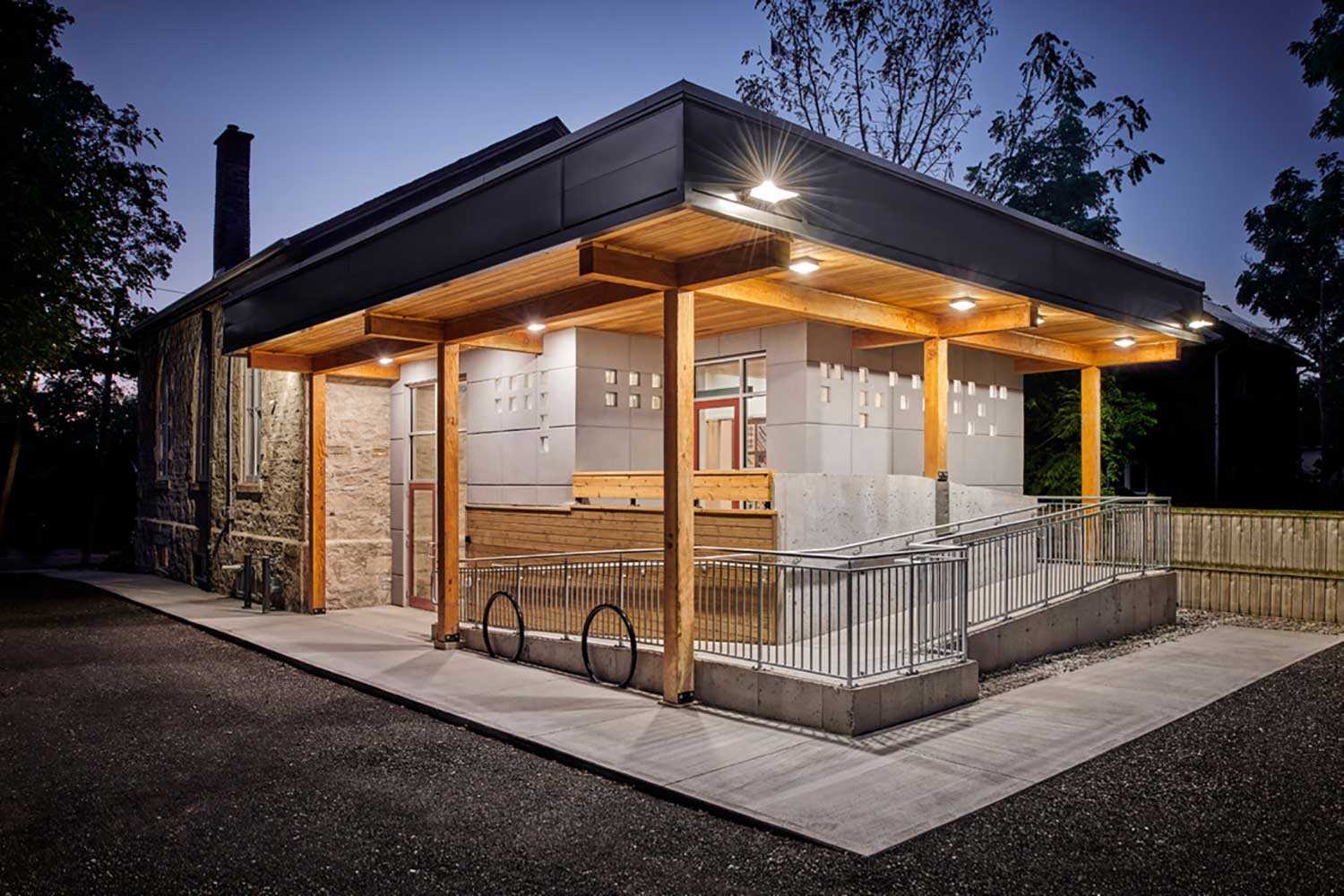
Thomas Symons Award for Commitment to Conservation:
Shannon Prince
Shannon Prince is the longtime curator and guardian of the Buxton National Historic Site & Museum. She is a devoted storyteller and participant in historical re-enactments that bring the history of Buxton and the Underground Railroad to life. Over decades, she has demonstrated exemplary commitment and dedication to the enrichment of the site, and of Black heritage in Ontario and beyond. She is a descendant of early freedom-seekers that came to Canada and her work brings an insight, respect and love to this chapter in Ontario’s heritage. Prince began her current role as curator at Buxton in 1999 and possesses a certificate in Museum Studies through the Ontario Museum Association. She is currently a member of heritage organizations such as the Ontario Museum Association and she has been a Board member of the African-Canadian Heritage Network, and Tourism Ontario’s Underground Railroad Alliance. She is involved in joint Underground Railroad projects with universities, historical societies, and heritage organizations in Canada and the United States, and she has lectured extensively to these groups. Prince still actively farms in Buxton with her husband and frequent collaborator, Bryan, and their four children.

